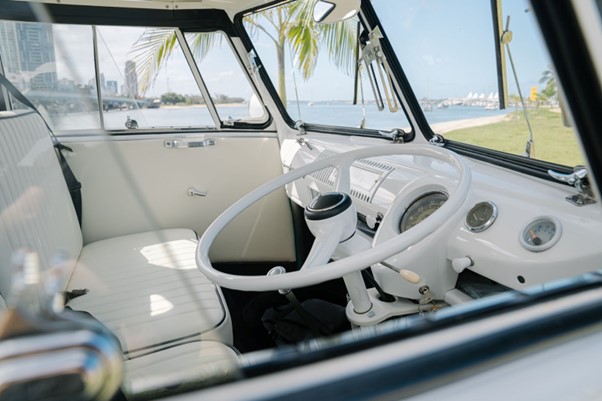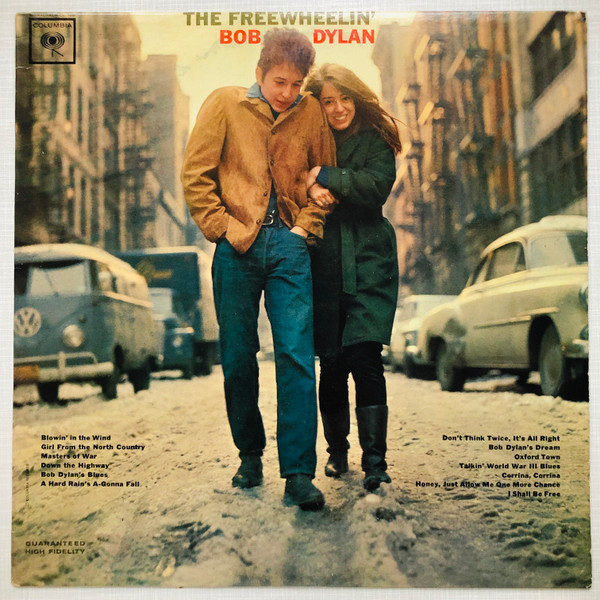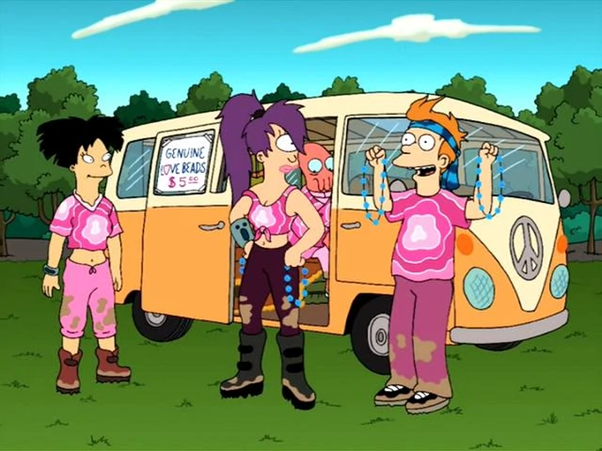VW Kombi Van | Get to Know This 60s Hippie Icon
The unlikely legend, the accidental icon – the Kombi Van. Designed to be the “The People’s Van” by Germans in the early 50s, it doesn’t really add up that this unassuming minibus would become such a standout.
It’s true that this classic car isn’t like the most of others we give away here at Classics for a Cause.
It’s far from a muscle car, it doesn’t have a turbo engine and it’s not fast – at all. So, how did this van still become the epitome of cool?
Well, let’s get to know the VW Kombi Van in all its glory. From its humble beginnings during World War II to an undeniable pop culture phenomenon, this is the VW Kombi. Far out!

About the VW Kombi Van
The VW Kombi Van is made by Volkswagen, the German car manufacturer behind many iconic cars. In particular, the VW Kombi Van is associated with a symbol of youth, freedom and carefree livin’.
As a matter of fact, the Kombi Van is known by many names – Transporter, Microbus, Camper – and since its launch back in 1950, the VW Kombi Van has gone through a variety of iterations and changes.
This classic car managed to achieve legendary status as a 60s icon. From its pop culture references to its unique and recognisable design, it’s surely a standout, symbolising road trips, beach living and music festivals – even to this day.
Whether it’s nostalgia or practicality (or a bit of both), it’s not surprising that everyone gets a certain feeling when they see a classic VW Kombi Van.
History of the VW Kombi Van
The design for the VW Kombi Van came from a single sketch drawn by Dutch businessman Ben Pon in 1949. The original van was built on the VW Beetle frame and has the recognisable look similar to a loaf of bread.
With the driver sitting in front of the front wheels and incredibly close to the steering wheel, it’s no secret that these vans (at least the original models) were on the dangerous side.
New models of the VW Kombi still exist, although they’re less familiar. Getting rid of the flat nose and moving the driver further back into the body of the van, the newer models don’t evoke the same emotions from owners and onlookers.
It’s why our favourite VW Kombis were released in the 60s and really give those peace and love vibes. It’s a classic car that doesn’t fit the traditional mould. It’s not a Mustang or a Camaro – it’s a clunky van that’s round and weird but totally cool all at once.
We bloody love this van!
VW Kombi Van in Pop Culture
Classic cars become classic cars not only for their style and appeal but also for their connection to pop culture.
References in music, movies, television and more have helped to solidify the VW Kombi Van in the history of counterculture around the world, especially throughout the 60s and 70s.
Seeping into the subconscious minds of a generation, this unlikely classic car is a legend in its own right. It’s not about horsepower or aerodynamics. It’s about a feeling. It’s about nostalgia. It’s about culture and coolness and youth.
Here are some of the pop culture references that stand out to us and prove that the VW Kombi Van is one of the world’s favourite cars of all time.

VW Kombi Van in Music
Let’s start with some incredible nods to the VW Kombi in the world of music.
It doesn’t get much more seminal than Bob Dylan and the VW Kombi Van is there on the cover of his 1963 album “The Freewheelin’”.
A bit later, The Who wrote a song in 1967 called “Magic Bus” that’s an entire song about the VW Kombi Van. Pretty crazy that a staple of the classic rock musical repertoire is all about this funny-looking van.
In another song that the world undoubtedly associates with Australia, the 1981 hit “Down Under” by Men at Work mentioned the VW Kombi Van in the lyrics:
“Travelling in a fried-out Kombi
On a hippie trail, head full of zombie”
In the 70s, Bruce Springsteen mentioned the VW Kombi Van in his son “The Angel” with the lyrics:
“In Volkswagen vans with full running boards
Dragging great anchors”
Still later, in the mid-90s, another band that exudes carefree youth is Sublime and the VW Kombi Van is mentioned as a microbus in their cover of the Grateful Dead’s song “Scarlet Begonias” with the lyrics:
“Because a woman took her lovin’ over me
And just to gain her trust I bought a microbus”
Then, rising to popularity in the early 2000s, another band that’s synonymous with reckless abandon is Blink 182 and in their “First Date” music video, one of the characters lives in a VW bus which is a major part of the video.
VW Kombi Van in Movies
Now, let’s talk about some of the movies we see featuring the VW van.
In true free-spirited fashion, the Fast Times at Ridgemont High features the microbus when Jeff Spicoli and his stoner friends turn their orange VW Kombi Van into a “hot box” to get well and truly stoned. That sounds about right…
Another movie feature comes to us in Back to the Future. While the DeLorean is obviously the star of this iconic 80s film, the VW Kombi Van does make an appearance. It’s driven by the Libyan terrorist in a car chase with Doc Brown. While this isn’t your typical depiction of the hippie van, it fits in with the recklessness sometimes associated with the Kombi.
Much later, the VW Kombi Van shows up in an animated form in the hit Pixar movie Cars in 2006. Voiced by George Carlin, the VW Type 2 named Fillmore plays the role of the chilled out hippie van and stays true to its association with counterculture and 60s peace and love.
VW Kombi Van on Television
Both animated and real-life versions of the VW Kombi Van (particularly the Type 2), can be seen throughout television history in various forms.
Childhood heroes, the Power Rangers series featured a two-toned white and blue VW Kombi Van in Power Rangers Ninja Storm, driven by Tori.
In another iconic TV series, the VW Kombi Van makes an appearance in Star Trek: Voyager driven by Rain Robinson. And although you won’t see the microbus in the original Captain Kirk series, it’s still pretty legendary to show up in the Star Trek franchise at all.
The 2005 hit sci-fi series Doctor Who featured the VW Kombi Van in an episode called “Gridlock” where thousands of the microbuses are trapped on a motorway in a constant traffic jam for 20 years – an interesting storyline, no doubt.

And, again in an animated form, the VW Kombi Van appears in Futurama as a key part of the “Bendin’ in the Wind” episode as it was referred to as “free-spirited German engineering”. Pretty spot on, hey.
Other Pop Culture References
But there’s more!
Volkswagen, as a whole, is known for their ‘Mad Men era’ ads that were totally unique for the time and transformed the advertising industry forever.
While we might not even realise it, particularly unique advertising for the VW Kombi Van has surely had an effect on its appeal and legendary status.
Other pop culture references include the green VW microbus driving the stress of the San Francisco level of the Tony Hawk Pro Skater video game – just another nod to the California feeling that the VW Kombi Van is known for.
Altogether, these pop culture references have surely seeped into our collective unconscious and are probably the biggest reason for the VW Kombi Van standing out as a classic car with chill vibes and an adventurous spirit. Bloody oath!

If you’re as into these classic cars as we are and you want to enter one of our giveaways (the proceeds support Aussie vets by the way!), become a VIP Member for the chance to own classic cars like the 1967 VW Kombi Van.
Save heaps on essential auto parts with our VIP club membership, which provides access to discounts from over 200 Auto retailers and services providers within Australia; as well as getting exclusive access to classic car giveaways.
Be sure to sign up today! Join now and I’ll see you next time.


